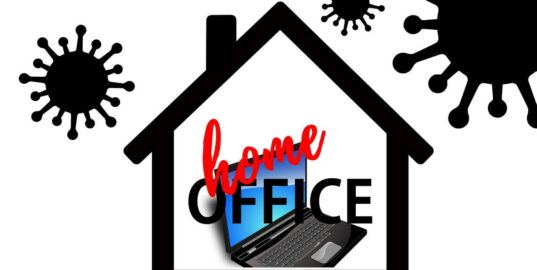Persoonlijke aandacht en unieke service, ook bij kleinere volumes
Meer dataruimte

Ontdek hier welke services we u bieden

Datacenter Groningen biedt zoveel meer (dan) dataruimte! We combineren hoogstaande techniek met gebruiksgemak en uitstekende dataverbindingen met hoogstaande beveiliging. Daardoor zijn onze klanten gegarandeerd van een zeer hoge uptime (al vele jaren 100%) en uitstekende datasnelheden. Met een optimale internetverbinding voor bedrijven in haar omgeving faciliteert Datacenter Groningen groei en continuïteit voor ondernemers. Uw infrastructuur is bij ons in goede handen, en dat tegen concurrerende prijzen.
Laatste nieuws

16 January 2024
Datacenter Groningen: 100% Dutch
Hengelo-based company Weserve has acquired Datacenter Groningen and with it is expanding its services to include data centre housing and related activities.

16 January 2024
How to work safely from home!
Since October, you can use the lorawan gateway with your sensors: dcgzuidbroek and dcgzuidbroek2 With this nice addition, you can log in to sensors at distances from 5-15 km.

16 January 2024
Noorderpoort launches data centre education: ‘growing demand for qualified staff’
Two shipping containers were placed behind the Datacenter Groningen building on Monday, 15 November 2021. They will form the first hydrogen-powered mobile data centre in the world.
Kenniscentrum
4 things to think about when going to a data centre.
You’ve decided to move your IT infrastructure to a data centre, but what do you need to think about, what do you need to know and what do you need to arrange. In this article, we tell you which 4 things to think about when you want to move to a data centre.
Values
Ultimately, you choose a data centre that suits you as an entrepreneur or your organisation. It’s important to know up front who you are as a company and what you value. For example, is it important to you to have someone on site 24/7 or would you like a fixed contact person? Think carefully beforehand about what kind of support you need from a data centre.
Quantity of servers
Next, it’s important to map out how much space your equipment will take up. How many servers do you want to install and is one rack enough or do you need several?
Network
It’s also important to think in advance about how you want the network to be laid out. How many IP addresses do you need and do you want to use IPv4 or IPv6, for example? Moreover, it is wise to check in advance how much internet bandwidth you will consume.
Power
Based on your servers and network preferences, we can start looking at how much power you will consume, what type of power supply you need and how much power you can expect to use.
As mentioned earlier, at Datacenter Almere and Datacenter Groningen we’re happy to think along with you about the needs, equipment and layout. We offer hands-on support. We’re not afraid to roll up our sleeves and help you out.
Do you have any questions or would you like more information?
What does a data centre consist of?
In our previous article, we explained how a data centre guarantees the continuity of your computer servers and digital applications. In other words, the purpose of the data centre is to keep all systems and services running at all times. In this article, we give you a glimpse into the inner workings of a data centre and tell you what the main aspects of a data centre are.
Server area
First of all, you have the server room where all the racks are located. These are often in an enclosed space to allow for optimal cooling. Moreover, it is possible to increase the physical security of your rack by putting a cage around the systems, for example. The server rooms of Datacenter Almere and Groningen can only be entered by those authorised to do so.
Cooling system
All these technologies produce quite a lot of heat, so it’s important to maintain the ideal temperature in the data centre. For this purpose, high-efficiency cooling systems dissipate heat through the air-conditioning system to the outside air via heat exchangers located on the roof. Typically, different cooling techniques are used, such as air cooling or water cooling. More innovative techniques are also used, such as adiabatic cooling or cooling with oil or other liquids. There are four cooling systems in Datacenter Groningen and Almere, two of which are in operation around the clock. Should one fail, we have a spare cooling system. If that fails as well, the other cooling system automatically takes over.
Heat exchangers
Up on the roof of the data centre, heat exchangers release excess heat from the turbo cooling units. When outdoor temperatures are high, the exchangers are sprinkled with water to increase the efficiency of heat dissipation.
Diesel generators and batteries
Power is one of the most important aspects of a data centre. When the power goes out, all systems stop – which is exactly what a data centre tries to prevent.
To do so, the diesel generators start up automatically within seconds. Until the generators have gone through their short start-up phase, the Uninterruptible Power Supply (UPS) provides power. The UPS also compensates for voltage fluctuations and distortions. However, these batteries cannot cope with power failures that last longer than a few hours or days. This is where the generators come in. After the short start-up phase, the generators take over the entire power supply, allowing the cause of the power failure to be resolved.
Monitoring
Control stations for building security and data centre systems serve as central command areas in the data centre. This space is also known as a Network Operations Centre or NOC. All important information is collected through a DCIM (Data Centre Infrastructure Management) system and displayed on large screens. Any deviation from standard operations is reported immediately.
Meet-Me-Rooms
Connectivity is key for a data centre. Without strong connections, a data centre is useless. All these connections come together in Meet-Me-Rooms, or MMRs, making connections easy and relatively inexpensive. There are always at least two MMRs in a data centre, due to redundancy, from where the connections are distributed to the server rooms.
Security
To keep our data safe, physical security is at least as important as digital security – also known as cybersecurity. For instance, data centres have sophisticated fencing and a secure gate to keep unwanted visitors out. In addition, there are multiple video cameras and CCTV cameras monitoring the outside of the building and grounds. The cameras are placed in such a way that each camera also monitors another. So if one of the cameras fails, monitoring is still available.
Firefighting
All server rooms where data is stored are equipped with smoke detection systems that monitor the room 24/7. In the event of a fire, the water, firefighting foam or extinguishing powder used can potentially cause more damage to a data centre than a charred cable. For this reason, special extinguishing gases are preferred. An extinguishing gas reduces the oxygen content in the air, which suffocates the source of the fire and is harmless to people and equipment.
We trust this has given you an insight into all the areas of a data centre. Do you have any questions? Please feel free to contact us.
What is a data centre and what can you expect?
Digitalisation touches many areas of our society and is developing at lightning speed. Just think about the cloud, Artificial Intelligence, 5G networks and others. Almost all of these technologies are housed in data centres. For this reason, data centres are called the foundation of the digital economy. In this article, we explain what a data centre does and what you can expect from one.
What is a data centre?
A data centre is a high-security building with a single purpose, which is to ensure that your computer servers hosting your digital applications run around the clock. A data centre does this by facilitating power supplies, cooling, security and data infrastructure. All these systems are redundant. This means that all these systems are implemented multiple times. For example, we have four cooling systems at Datacenter Groningen, two of which are in operation at any given moment. Should one fail, we have a spare cooling system. If that fails as well, the other cooling system automatically takes over. In short, a data centre is a building where you can safely run your servers and digital applications.
What types of data centres are there?
There are two types of data centre: multi-tenant and single tenant. We also call the first category ‘colocation data centres’. Multi-tenant data centres basically rent out data centre space. In contrast, a single-tenant data centre only facilitates the company’s own needs. Think, for example, of a bank or government departments. We also refer to these data centres as enterprise data centres.
What can I expect from Datacenter Groningen?
Before you go to a data centre, you’ll want to know what to expect; we understand that like no other. Datacenter Groningen is where you can store your data and equipment. We are the place where everything is well organised and ensures you don’t have to worry about a thing. From the coffee to the refrigeration – everything is organised in detail for you. We work with you. Whether you need smart and innovative solutions or are moving from one data centre to another. We’re at your service and easy to get in touch with. Because we’re your partner in data!


